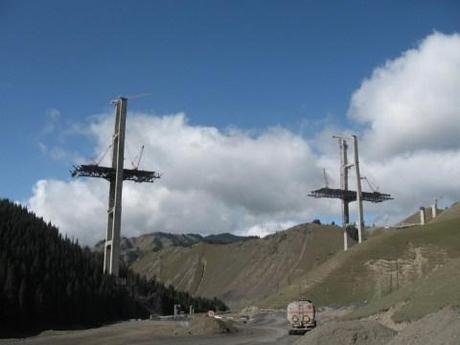
What is Asian development going to look like in the near future? Given that China remains the region’s leading giant, and one of its fastest-growing economies, the challenges for the new Chinese leadership have became the focal point of recent discussions on this topic.
Carnegie Endowment for International Peace’s two latest forums brought together renowned experts and scholars to unfold the Asian development outlook. These forums focused primarily on economic rebalancing, energy development, and the Chinese growth model. The speakers included Changyong Rhee, the Chief Economist of the Asian Development Bank (ADB), Andrew Burns, the manager of the global macroeconomic trends team of the Development Prospects Group at the World Bank, and Michael Pettis, a senior associate in the Carnegie Asia Program based in Beijing.
During Rhee’s opening remarks, he emphasized that “China’s rebound and ASEAN resilience are major drivers of regional growth.” In reference to the Asian Development Outlook 2013 report, Rhee noted that growth in Asia’s developing countries is expected to pick up from 6.1 percent in 2012 to 6.6 percent in 2013 and 6.7 percent in 2014. Furthermore, Rhee believes that economic rebalancing in the region is already underway.
However, sustaining Asia’s growth requires diversification of its energy mix—making it cleaner and more affordable, Rhee said. According to the Outlook 2013 report, Asia will consume 56 percent of world’s energy by 2035, and a great deal of that consumption will come from imports. The challenge, then, is to find ways to curb demand growth and to offer cheaper energy to the poor without harming the environment or depleting non-renewable resources.
While the statistics show both strengths and weaknesses in the outlook of Asian development, the core issue lies within the Chinese growth model. According to Burns, moving away from the investment-led growth model will be a difficult challenge for China because it will impose major macroeconomic issues. Adding to Rhee’s statement in regards to curbing demand growth, Burns cautioned the audience that subsidization is not the best method. Instead, Burns argued that structural policy reform on the supply-side should be the priority for China’s rebalancing.
In a separate forum, which complemented the discussions above, Pettis dove into an in-depth analysis of the Chinese growth model and its need for economic rebalance. Pettis projected that China will eventually face a debt crisis if it continues the investment-driven model. The real question raised, then, is how can China truly rebalance?
The highlight of Pettis’ recommendation to this question consists of two major points. In his analysis, Pettis stressed that raising household income as a percentage of GDP needs to be the primary focus. To achieve this goal, Pettis explained that the Chinese government should gradually raise the value of the currency, raise interest rates, and raise wages. Transferring state-owned wealth to the citizens was the other rebalancing method that Pettis strongly advocated. However, he recognized that such reform is politically challenging. In his conclusion, Pettis urged the Chinese government to strengthen small and medium-sized enterprises (SMEs), saying that “SMEs play a significant role in economic rebalancing.”
While quantitative analyses and recommendations have been provided by the Western experts, the future of Asian development remains unknown and largely relies on China’s next move in refining or reforming its growth model. What it takes to help anti-reformers to eliminate their fears is worth pondering.
Perhaps the tipping point in China would be a financial crisis by which an inevitable rebalance will take place, much like what happened in the U.S. in the 1920s. Or, perhaps China could genuinely rebalance, similar to Japan’s rebalance in the 1980s and 1990s, by gradually allowing the value of its currency, interest rate, and wages to rise. Whichever route that the new Chinese leadership adopts, the spotlight is now glaring on meaningful policy reform, now more than ever.

